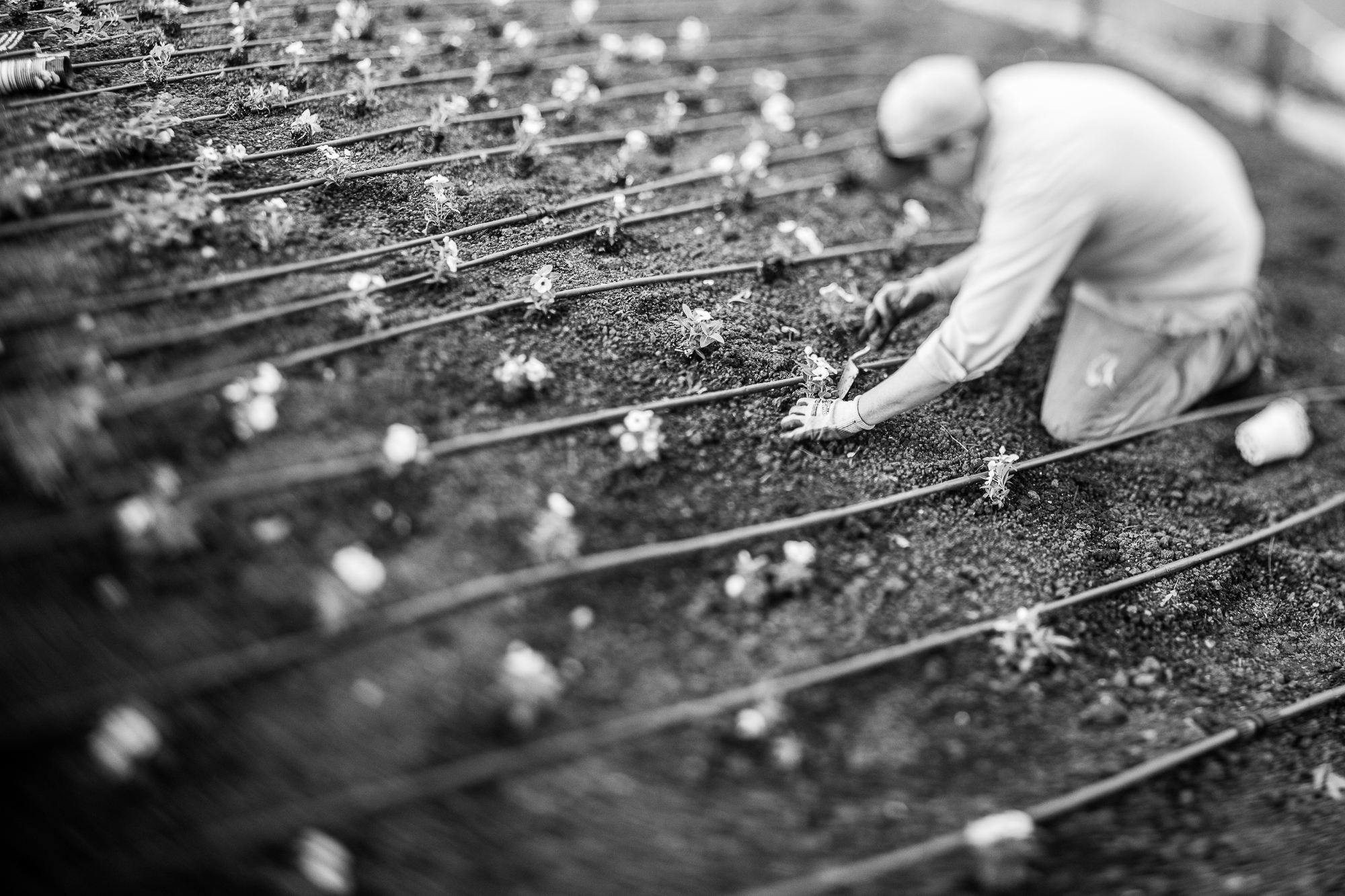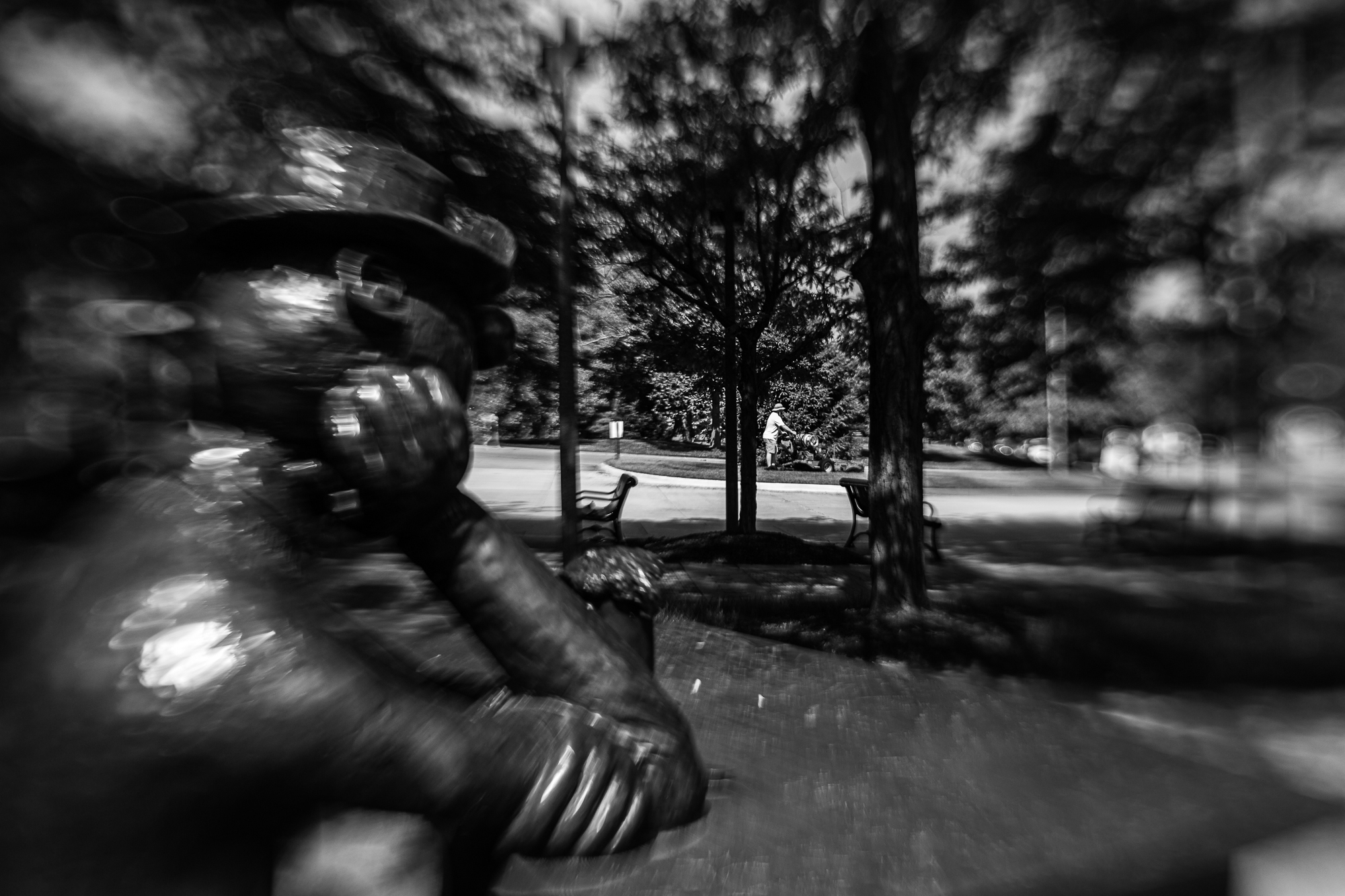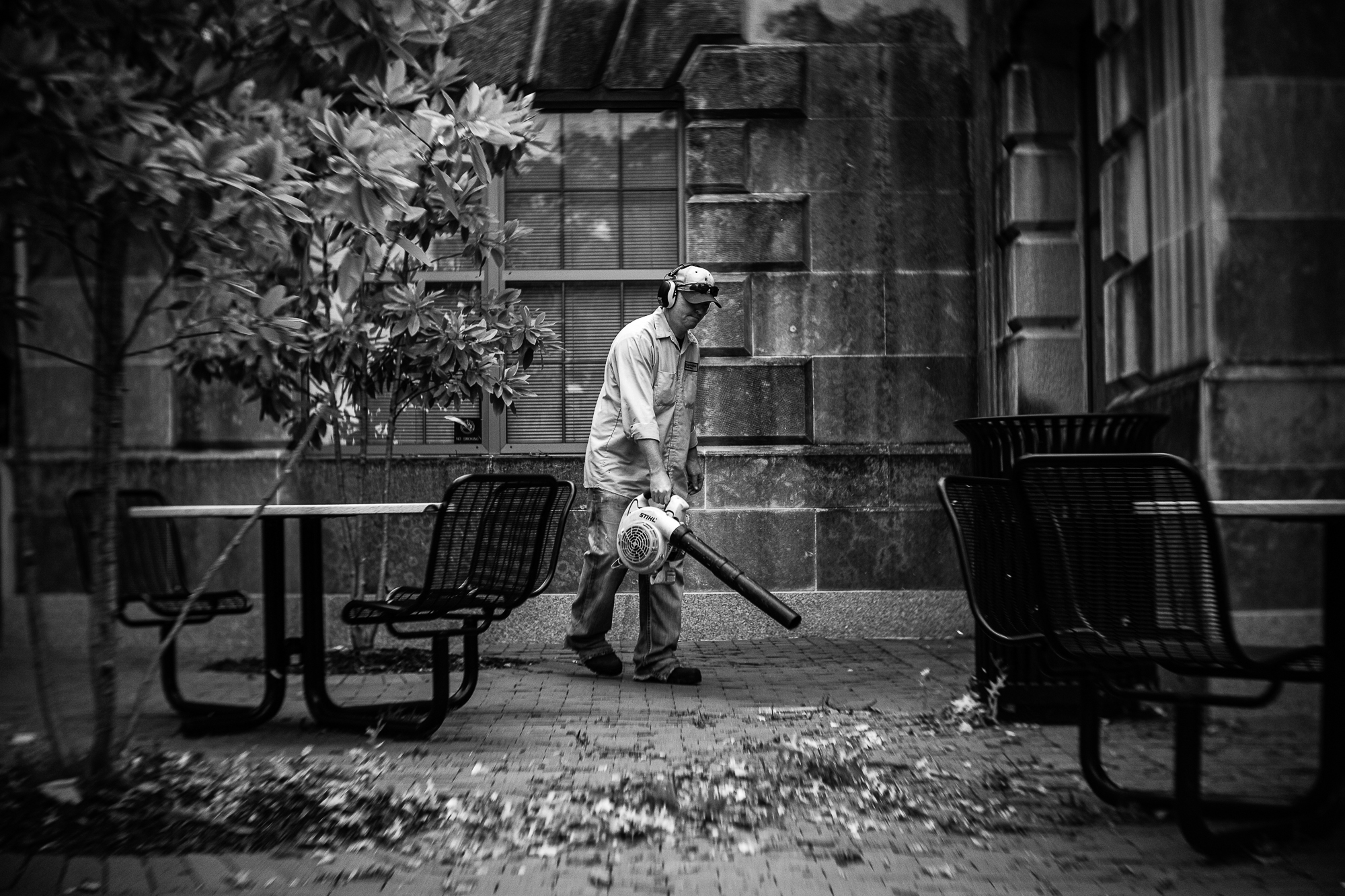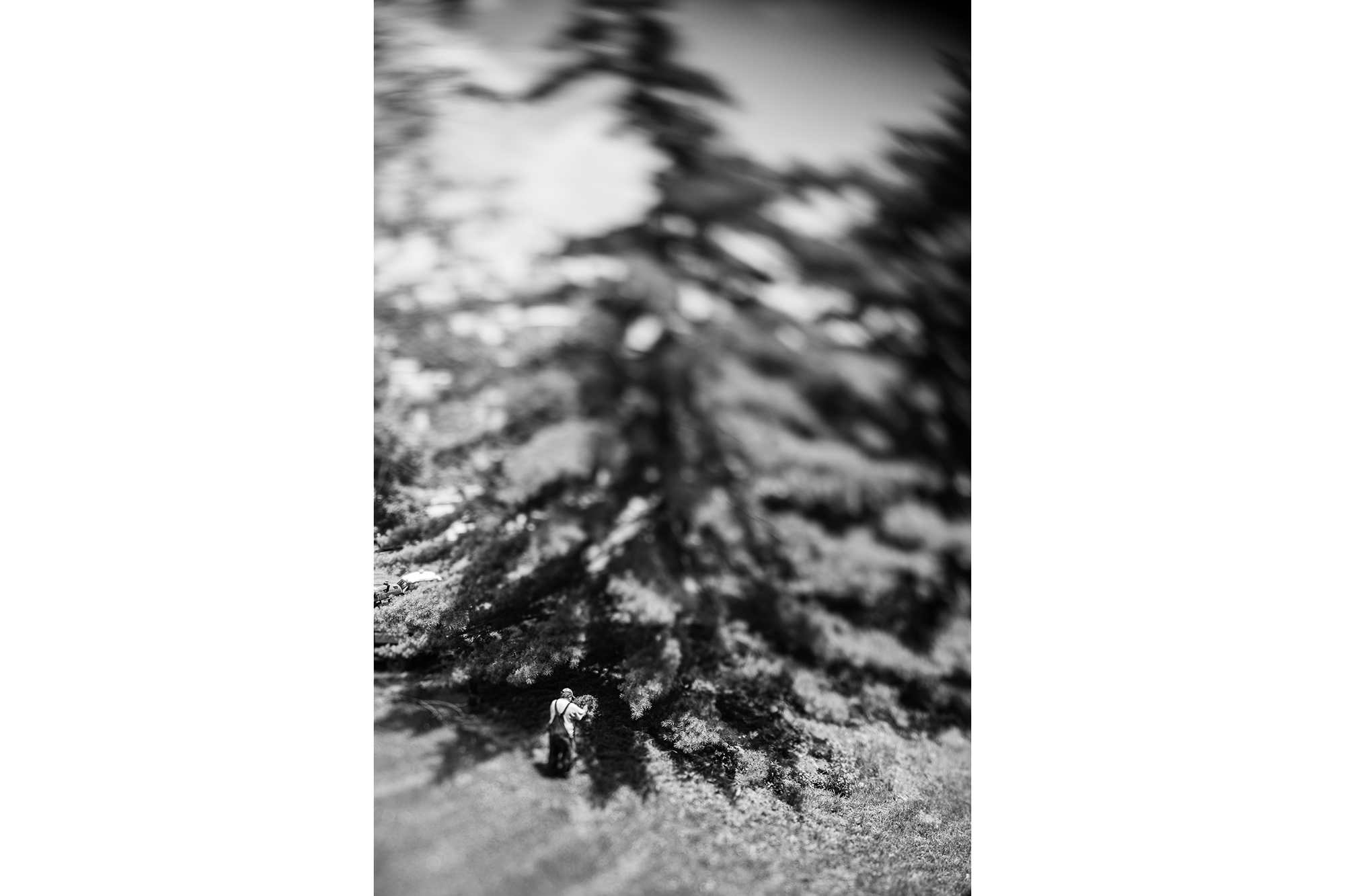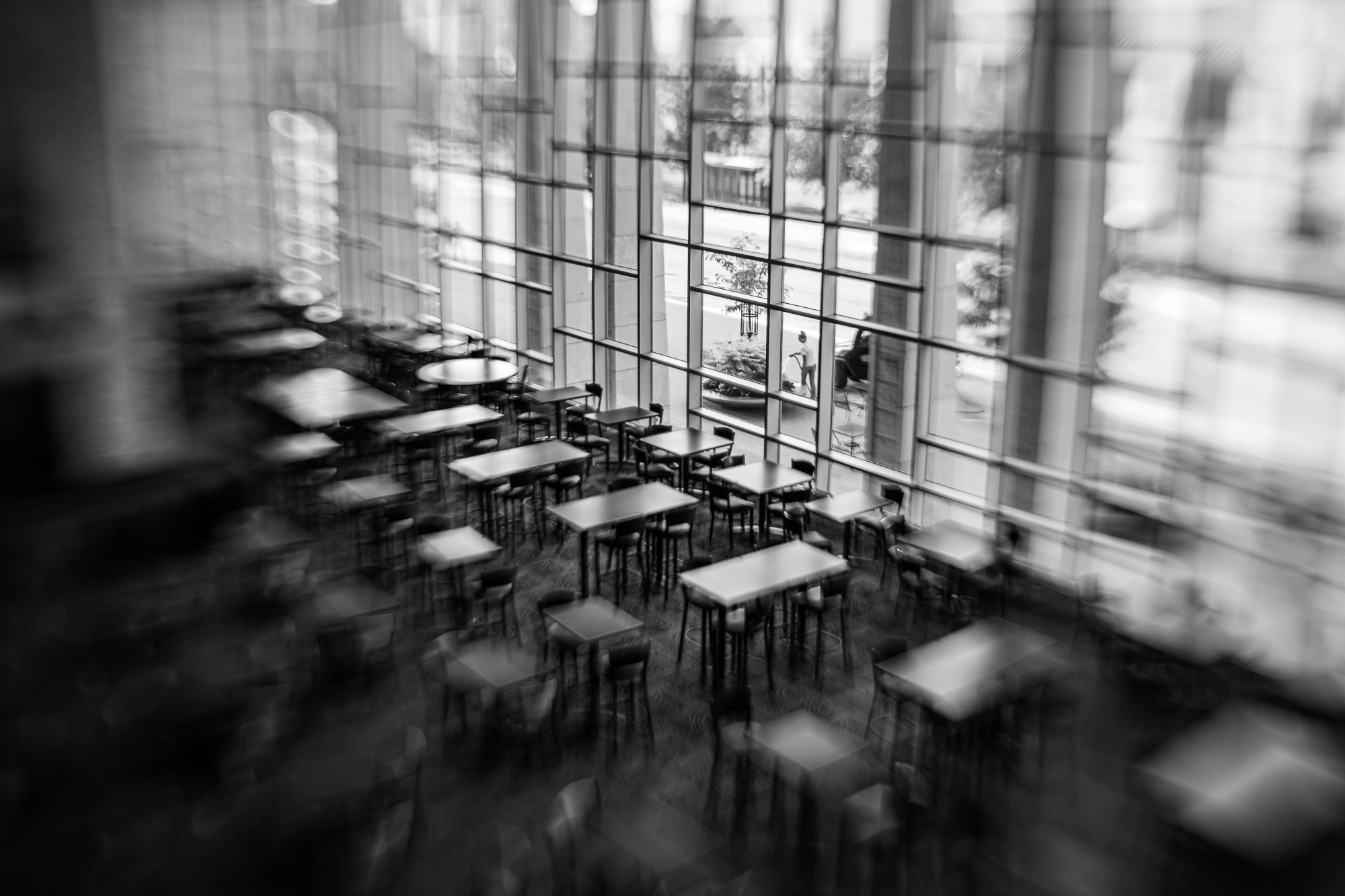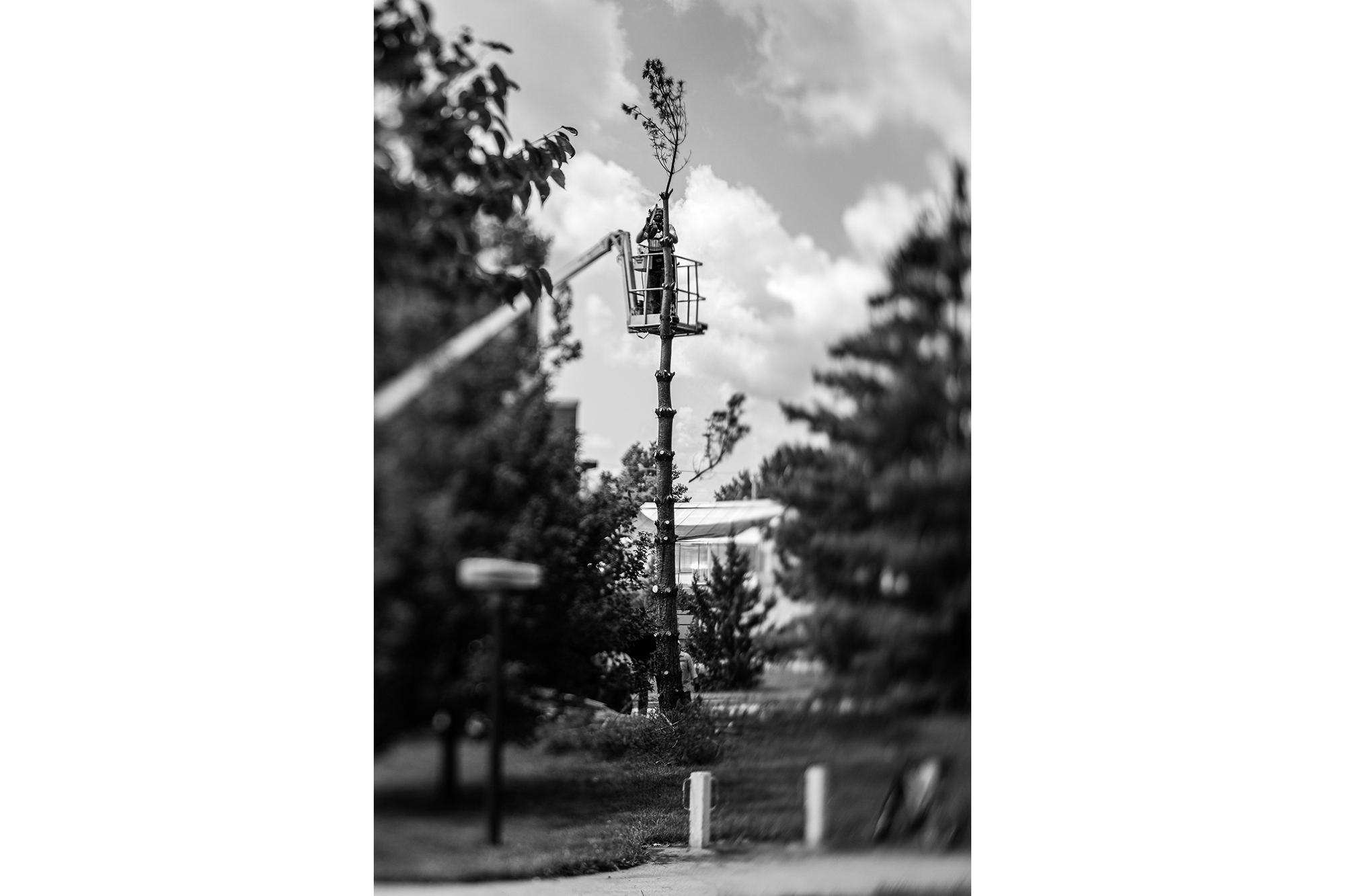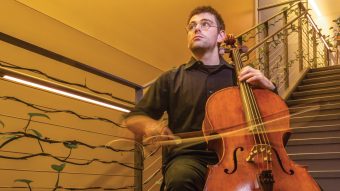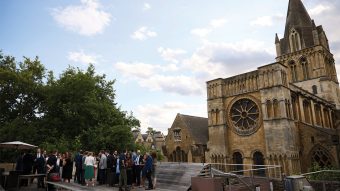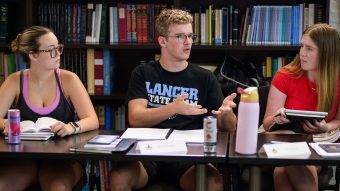Nov. 10, 2021
Contact: Kenny Gerling, gerlingk@missouri.edu
Combat photography and gardening might seem like separate worlds. But Cory MacNeil, a second-year photojournalism PhD candidate in the University of Missouri School of Journalism and an Army veteran, embarked on a project that found unexpected connections between the two.
“They are very different subjects, but my approach to each is similar,” said MacNeil, a Purple Heart recipient who studies the ethics of photojournalism during wartime. “I want to see who is doing something and to understand why.”
MacNeil spent the summer following MU groundskeepers across campus as they picked, pruned and planted. He documented their work for a photo essay and accompanying exhibition. The project became a way for MacNeil to learn even more about his new home base while also refining his skills as a reporter and photographer.
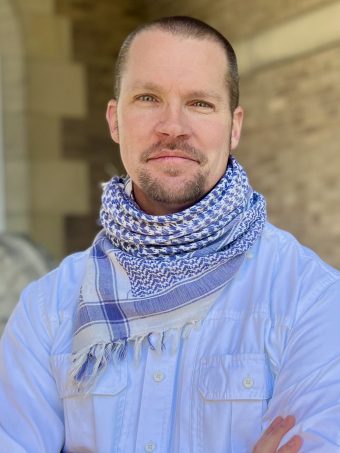
In the weeds
Inspiration for the project came to MacNeil from an unlikely source. “I was walking by a planter box and someone pulled up in one of the little orange Kubotas and started watering flowers,” he said. “It dawned on me that people make this all happen.”
With the permission of the Landscaping Services team, MacNeil decided to spend the summer following groundskeepers as they tended to the Mizzou Botanic Garden. MacNeil tagged along every weekday for 10 weeks and took more than 8,000 photographs.
One of his subjects was groundskeeper Colleen Thomas, who has worked on campus for more than 14 years. Thomas said MacNeil made for great company. “When we first heard we were going to have a grad student, we imagined a 25-year-old, instead of a guy later in life,” Thomas said. “Instead of just observing, Cory had a lot of knowledge and was always throwing us questions.”
For the series, MacNeil used a special lens on his camera that puts the subject in narrow focus while distorting the surroundings. The effect lends a psychedelic-feel to photos that have historically received a more straightforward journalistic treatment.
Keith Greenwood, an associate professor in the Missouri School of Journalism, said the unusual approach is a reflection of MacNeil’s interests as a journalist. “Photographers use the tools at their disposal to highlight or direct attention,” Greenwood said, noting MacNeil’s background isn’t horticulture. “Recognizing a specialized sort of discipline and focusing attention on that — while understanding how that discipline fits in a bigger picture — that comes through in the photos.”
MacNeil weeded more than 8,000 photos down to just 12. The final collection was showcased at a Friends of the Botanic Garden event last October and also featured in an article by the Columbia Missourian. The photos are currently on display in the foyer of the Reynolds Journalism Institute.
A veteran’s perspective
MacNeil is still relatively new to Columbia. After a 20-year military career, he left Ft. Mead, Maryland in 2020 and immediately drove to Missouri to begin his new life as a civilian and a Tiger.
While not a photographer by training, MacNeil said his interest in photojournalism bloomed during his final deployment to Afghanistan.
“I was living on a big Afghan army training base with a tiny coalition base inside it,” MacNeil said. “I had certain work obligations, but I also had my camera — which gave me an additional reason to observe, meet and interact with other people.”
Greenwood said MacNeil brings that same enthusiasm to his new work as an academic. “Cory is a very energetic, disciplined and focused person as a student, but he’s also very inquisitive, creative and interested in knowing about other people around him,” Greenwood said.
The job of a journalist
MacNeil said a core part of his work is investigating subjects that are often ignored or overlooked.
“I’m studying how people interact with the media and, specifically with my background, war correspondents,” he said. “Are there moral considerations for what photojournalists do? And, for the rest of us, what are moral implications of an audience viewing? I want to start asking ethical, moral questions about what is happing in the world and on behalf of us.”
It’s a topic he hopes to continue exploring as an academic, while still telling great stories wherever he can find them.
“The project with the Mizzou Botanic Garden was mostly about talking to people,” he said. “I tried to build some real rapport and to understand something about the work they’re doing.”

